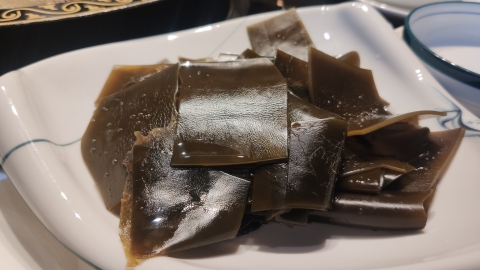What foods contain iodine?
Generally, iodine-containing foods include kelp, nori, sea fish, sea shrimp, and iodized salt, which can help supplement the iodine required by the human body. Detailed analysis is as follows:

1. Kelp: Kelp is a food rich in iodine content, with hundreds to thousands of micrograms of iodine per 100 grams of dried kelp. Eating kelp regularly and in moderation can quickly replenish the body's iodine levels. Additionally, kelp contains dietary fiber, calcium, potassium, and other nutrients that help maintain bodily functions.
2. Nori: Nori also has a relatively high iodine content, with considerable iodine levels per 100 grams of dried nori. In daily meals, nori can be used for making soups or preparing sushi. This allows for iodine supplementation while also consuming proteins, B vitamins, and other nutrients, with a delicious and savory taste.
3. Sea Fish: Sea fish such as hairtail and yellow croaker contain a certain amount of iodine. Sea fish are rich in high-quality protein and relatively low in fat. Consuming them in moderation not only supplements iodine but also provides essential amino acids for the body, contributing to the health of bones and muscles.
4. Sea Shrimp: Sea shrimp are also among iodine-containing foods, with a certain amount of iodine present in every 100 grams. Sea shrimp have tender meat and are rich in nutrients like protein, magnesium, and phosphorus. Consuming them in moderation can supplement iodine and provide energy to the body, enhancing physical fitness.
5. Iodized Salt: Iodized salt is the most accessible iodine-containing food in daily life. Adding iodine to table salt allows people to conveniently supplement iodine during cooking. Using iodized salt when stir-frying or making soups in daily cooking can meet the body's basic iodine requirements.
In daily life, iodine supplementation should be moderate to avoid excessive intake that may cause physical discomfort. Additionally, based on individual circumstances, such as the iodine content of water in the residential area, the consumption proportions of iodine-containing foods can be reasonably adjusted to maintain a balanced diet.








